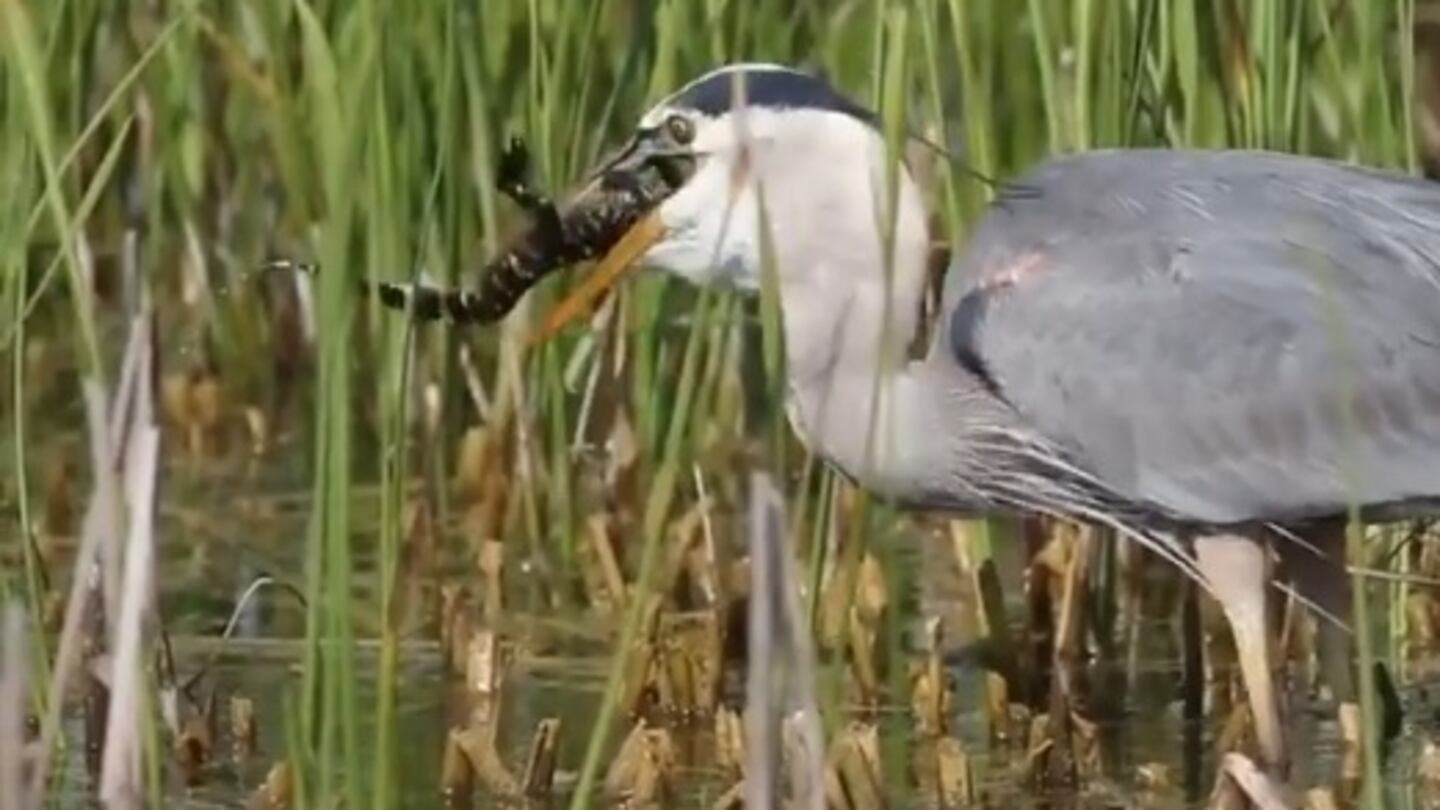LAKE APOPKA, Fla. — A Florida wildlife photographer caught an indelible moment in nature: a great blue heron spearing and devouring a baby alligator whole.
Shellie Gilliam, owner of Florida Wildlife and Exotic Animal Sanctuary and Rehabilitation Center, noticed the wading bird Saturday in Lake Apopka, WBBH reported.
“I spotted it just after it had captured the alligator a few hundred yards away and then it flew with the alligator in his mouth to this spot where he consumed it,” she wrote on social media. “Just Wow!”
YES, A bird can eat an alligator! This Savage Great Blue Heron spent a half hour killing and consuming a large juvenile...
Posted by Shellie Gilliam on Tuesday, December 8, 2020
She was not sure what she witnessed.
“I first thought it was a large fish or a greater siren, but upon closer review through my camera, discovered it was a large juvenile alligator,” Gilliam told WFLA.
Yes, a bird can eat an alligator! Amazing Photo series and a video clip I shot of a Great Blue Heron killing and eating...
Posted by Shellie Gilliam on Sunday, December 6, 2020
The large wading birds, a common site in Florida wetlands, are known to snack on the young reptiles that would otherwise be a predator. A 2017 video from the Florida Fish and Wildlife Conservation Commission shows a great blue heron eating a small alligator in Melbourne.
“Great blue herons eat nearly anything within striking distance, including fish, amphibians, reptiles, small mammals, insects and other birds,” the wildlife agency said.
Great Blue Heron Eats Young AlligatorPhotographer Scott Martin visited the Viera Wetlands near Melbourne, Fla. and observed an encounter between a great blue heron and a small American alligator. "The great blue heron 'played' with the little gator for at least twenty minutes before killing and swallowing it," said Scott. Great blue herons eat nearly anything within striking distance, including fish, amphibians, reptiles, small mammals, insects and other birds. This large, wading bird is a familiar sight to most Floridians. It's a permanent resident of wetlands throughout the state, often seen along ponds, lakes and canals in housing developments. To see more of Scott's work, visit: http://www.scottmartinphotography.ca/
Posted by FWC Fish and Wildlife Research Institute on Thursday, February 16, 2017
Cox Media Group






